Skilhunt EC300 Flashlight Review
Skilhunt has released the EC300, a very interesting flashlight that offers USB-C charging, powerbank capability, High CRI, and RGB! Read on!
Official Specs and Features
Here’s a link to the Skilhunt EC300 flashlight product page.
Versions
As far as bodies go, there’s just this one grey option. I happen to love this color though, so that’s perfect. There are two emitter options available: CW (6500K) and NW (4000K, High CRI).
Price
The price ranges from $66.90 (CW without 21700) all the way up to $80.90 (NW with battery, as seen in this review.) The Skilhunt EC300 flashlight is available from Skilhunt directly!
Short Review
You might have seen me gushing about this light before… I love it. I love the output, primarily – the 4000K High CRI Luminus SST-20 emitters are great. I love that it’s a quad (I love quads!). The user interface is great. I love that there are secondary emitters and that they’re in the center and not to the side. USB-C charging is fantastic and works great. The powerbank feature works very well too! All in all, this is just an extremely solid light! It even carries well for a 21700-sized light!
Long Review
The Big Table
| Skilhunt EC300 | |
|---|---|
| Emitter: | Luminus SST-20 (4000K, High CRI) |
| Price in USD at publication time: | $66.90 |
| Cell: | 1×21700 |
| Turbo Runtime Graph | High Runtime Graph |
| LVP? | Yes |
| Switch Type: | E-Switch |
| Quiescent Current (mA): | 0.06 |
| On-Board Charging? | Yes |
| Charge Port Type: | USB-C |
| Charge Graph | |
| Power off Charge Port | |
| Claimed Lumens (lm) | 1500 |
| Measured Lumens (at 30s) | 1131 (75.4% of claim)^ |
| Candela per Lumen | 4.8 |
| Claimed Throw (m) | 158 |
| Candela (Calculated) in cd (at 30s) | 213lux @ 4.778m = 4863cd |
| Throw (Calculated) (m) | 139.5 (88.3% of claim)^ |
| Claimed CCT | 4000 |
| Measured CCT Range (K) | 4000 Kelvin |
| Item provided for review by: | Skilhunt |
| All my Skilhunt reviews! | |
^ Measurement disclaimer: Testing flashlights is my hobby. I use hobbyist-level equipment for testing, including some I made myself. Try not to get buried in the details of manufacturer specifications versus measurements recorded here; A certain amount of difference (say, 10 or 15%) is perfectly reasonable.
What’s Included
- Skilhunt EC300 flashlight
- Skilhunt 5000mAh 21700 (button top)
- Pocket clip
- Lanyard
- Charging cable (USB to USB-C)
- Spare o-rings (2)
- Manual
Package and Manual
Build Quality and Disassembly
The build quality of the Skilhunt EC300 flashlight is fantastic. That’s not unusual for Skilhunt though; they make solid lights.
Only this grey finish is available, but that’s alright because this grey color is great!
I also like that the grip area isn’t aggressive. It’s plenty.
The head has “cooling fins” but really more of a design feature than actual cooling fins, I would guess.
Here’s the tailcap.
That tailcap has a nice beefy spring and no magnet.
The head has a coiled wire too, but I don’t think it’s a spring.
The bezel unscrews easily. I didn’t check, but I think that’s a standard quad optic. As you can see, it’s slightly frosted, which means this will be a more floody light. I will probably swap this with a narrow optic, because a quad in general will give enough flood, and a narrow optic will tighten it up just enough. Someone in the comments can let us all know if SST-20 emitters play nicely with narrow optics!
Size and Comps
115mm x 29.5mm (head diameter) x 28mm (body diameter), and 71.2g without the cell.
If the flashlight will headstand, I’ll show it here (usually the third photo). If the flashlight will tailstand, I’ll show that here, too (usually the fourth photo).
Here’s the test light with the venerable Convoy S2+. Mine’s a custom “baked” edition Nichia 219b triple. A very nice 18650 light.
Also seen above is the light beside my custom engraved TorchLAB BOSS 35, an 18350 light. I reviewed the aluminum version of that light in both 35 and 70 formats.
Retention and Carry
First is the pocket clip. This is a standard two-way friction fit pocket clip.
Being a two-way clip, it should be no surprise that it connects only on one end. In this case, the tail end.
The clip provides a nice and secure attachment, and fairly deep carry too.
Next up is the lanyard, which attaches through these two holes in the tailcap. It seems like the tailcap is longer just to accommodate this lanyard bumpout. I’d happily take a 2mm shorter light and just attach the lanyard elsewhere. But this works very well.
There’s no pouch or magnet or anything else.
Power and Runtime
The Skilhunt EC300 flashlight runs on a single lithium-ion cell. If you go for the package, you’ll get the 21700 seen below, which is a 5000mAh button top. It’s a fine cell.
The cell fits into the EC300 in the usual way – positive end toward the head.
Here are a few runtime graphs. Note that Skilhunt does spec both the CW and NW output – CW gets much higher lumen values, but the NW provides High CRI. That’s basically the tradeoff.
Charging
The Skilhunt EC300 flashlight has built-in charging, too. That charging is by way of a USB-C charging port in the head.
The charging port cover is held in place by a collar ring style connector. When pushed in, the cover seems very secure.
A cable is provided. It’s USB to USB-C.
USB and USB-C both work just fine. Charging looks very good, at over 2.5A for both USB and USB-C connection. Total charge time is under 3 hours, too. When the light is charging, the switch indicates in red. When charging is complete, the switch turns blue.
Powerbank
One more feature of the Skilhunt EC300 flashlight is that the USB-C port can be used as a powerbank! You’ll need to provide your own cable for this feature. It works quite well, providing over 2A at over 5V for over an hour. The output shut off, and I manually restarted it (you may need to loosen and retighten the tailcap to let the light know you want more), and then it carried on at over 1A for a while. Rinse and repeat at 0.5A, and you can drain the cell down to around 3V before it will go no further.
Here’s a detail of the first couple of minutes of “stress testing” the output.
Modes and Currents
| Mode | Mode Claimed Output (lm)^ | Claimed Runtime | Measured Lumens | Tailcap Amps |
|---|---|---|---|---|
| T1 | 2300+700+240 | 2m+160m+60m | 1230 (0s) 1131 (30s) |
5.85 |
| T2 | 1150+560+240 | 5m+210m+50m | 587 | 2.33 |
| H | 420+240 | 310m+50m | 234 | 0.75 |
| M1 | 150 | 16h | 80 | 0.25 |
| M2 | 40 | 60h | 18.3 | 0.05 |
| L1 | 5 | 270h | 4.3 | 19.2mA |
| L2 | 0.5 | 30d | 0.46 | 6.81mA |
| Red | 10 | 12h | – | 0.36 |
| Green | 28 | 12h | – | 0.36 |
| Blue | 7.5 | 12h | – | 0.36 |
^ Claims seem to be for the cool white version, and not ANSI standard readings.
Pulse Width Modulation
Fortunately, the Skilhunt EC300 flashlight does not use PWM in any mode.
Here you can see a “baseline” – a chart with almost no light hitting the sensor.
Then there’s the Ultrafire WF-602C flashlight, which has some of the worst PWM I’ve seen. It’s so bad that I used a post about it to explain PWM! Here are multiple timescales (10ms, 5ms, 2ms, 1ms, 0.5ms, 0.2ms) to make comparing this “worst” PWM light to the test light easier. That post also explains why I didn’t test the WF-602C at the usual 50us scale.
User Interface and Operation
The Skilhunt EC300 flashlight is controlled by a single e-switch. This switch has a backlight function and can light in red or blue. While the switch is transparent, it has an interesting design pattern printed (?) in the center. It’s another thing to like about the EC300! Not a functional improvement, but a nice touch.
The switch is proud and the action is good.
Here’s the switch lighting in blue.
The user interface could be a bit daunting, but it’s very straightforward when you get used to it. It’s also very logical and provides access to low from off, which is as close to a requirement from a user interface as I have.
Here’s a user interface table!
| State | Action | Result |
|---|---|---|
| Off | Hold | Low (Memory between L1 and L2) |
| L1 or L2 | Hold | Iterate between L1 and L2 |
| L1 or L2 | Click 2x | Switch to RGB group |
| RGB Group | Hold | RGB advance (Red > Green > Blue) |
| RGB Group | Click 2x | Switch to L1/L2 group |
| Off | Click 4x | Lockout (Three blinks of main emitters to confirm) |
| Lockout | Click 4x | Unlock to Low group (memory, can be L1/l2 or RGB) |
| Lockout | Click 2x | Iterate lockout indicator^ |
| Lockout | Hold | Momentary Output (Appears to be approximately L1) |
| L1/L2 or RGB Group | Click | Off |
| Off | Click | On in “Main Group” (Mode memory M2/M1/H) |
| Main Group | Hold | Mode advance (M2 > M1 > H) |
| Main Group | Click | Off |
| Main Group, Off, or Low group | Click 2x | Turbo Group (T1/T2) |
| T1/T2 | Hold | Iterate between T1 (higher) and T2 (lower) output |
| T1/T2 | Click | Off |
| T1/T2 | Click 2x | Main Group (memory output) |
| Main Group, Off, or Low group | Click 3x | Strobe Group (with memory) |
| Strobe Group | Click 3x | Previous Group (T1/T2 or M2/M1/H, depending on how you accessed Strobe Group)^^ |
| Strobe Group | Click 2x^^^ | Strobe Advance (S1 > S2 > S3 > S4)† |
| Strobe Group | Hold | No result |
^ Lockout indicator blinks a red switch every 2-3 seconds.
^^ Aside from just general mode memory (which you know I don’t like) this seems to me to be the only place where you may need to immediately remember what mode you were in so you have the experience you expect. However, the difference is getting the two highest white outputs, or the three main white outputs – it won’t be that dramatic even if you don’t remember. Also note that if you accessed the strobe group from off, triple-clicking will not return to off. For continuity, it should! In fact, if you accessed strobe from an off state, a triple-click sends the light to the Main group!
^^^ Seems like the strobe group is the only group that isn’t advanced by a hold. Since there’s no hold anywhere else into or out of Strobe, I am not sure why that user interface continuity wasn’t maintained here.
† Strobes are like this:
S1: Disorienting strobe of White (turbo, ish)
S2: SOS (main white, some mid-High output)
S3: Red beacon (1Hz or so)
S4: Fast blink of red then green then blue
LED and Beam
Skilhunt has smartly offered a CW and NW option in the Luminus SST-20. I have to say, the SST-20 sort of sneaks up on you as being great. Particularly this 4000K version – it’s really, really good.
One more thing to like about the EC300 – this toothed bezel is easily removable (by unscrewing!)
LED Color Report (CRI and CCT)
Same mode order as you’ll see below. First, the 7 white modes, lowest to highest. Then Red, then green, then blue. I find the blue to be quite intense!
Beamshots
These beamshots always have the following settings: f8, ISO100, 0.3s shutter, and manual 5000K exposure. These photos are taken at floor level, and the beam hits the ceiling around 9 feet away.
Tint vs BLF-348 (KillzoneFlashlights.com 219b version) (affiliate link)
I keep the test flashlight on the left and the BLF-348 reference flashlight on the right.
I compare everything to the KillzoneFlashlights.com 219b BLF-348 because it’s inexpensive and has the best tint!
Conclusion
What I like
- Great build quality
- Red, green, and blue emitters in the center of the MCPCB!!
- USB-C charging works great
- Powerbank feature works very nicely, too.
- 4000K High CRI Luminus SST-20 emitters are so good (and the claims made about it by Skilhunt are accurate)
- There’s a neat design on the switch
- Ability to hit the Low group from off
- Consistency in the “off” access – From any on state, click turns the light off
What I don’t like
- RGB each have just one output (and it’s fairly high)
- A few user interface inconsistencies that can make some modes a bit awkward compared to how you’ve accessed other modes (ie inconsistency of “hold” action)
- Price – at $80, it’s not inexpensive
Notes
- This content originally appeared at zeroair.org. Please visit there for the best experience!
- For flashlight-related patches, stickers, and gear, head over to PhotonPhreaks.com!
- Please use my amazon.com referral link to help support zeroair.org!
- Please support me on Patreon! I deeply appreciate your support!




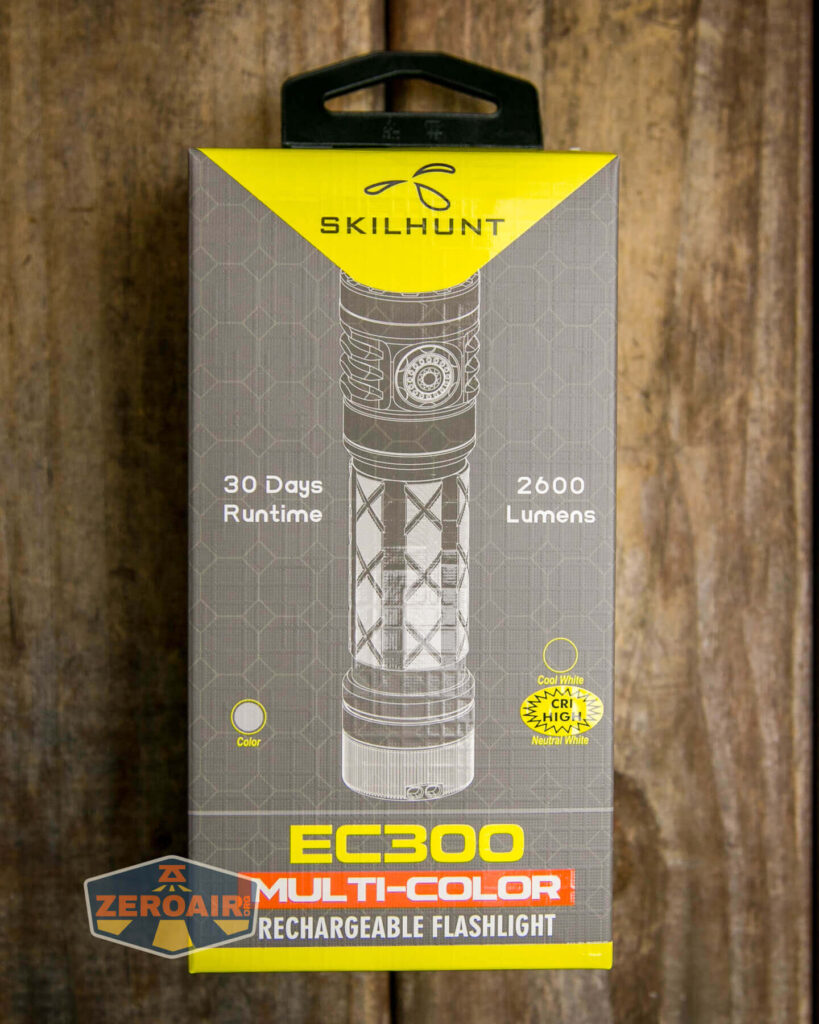







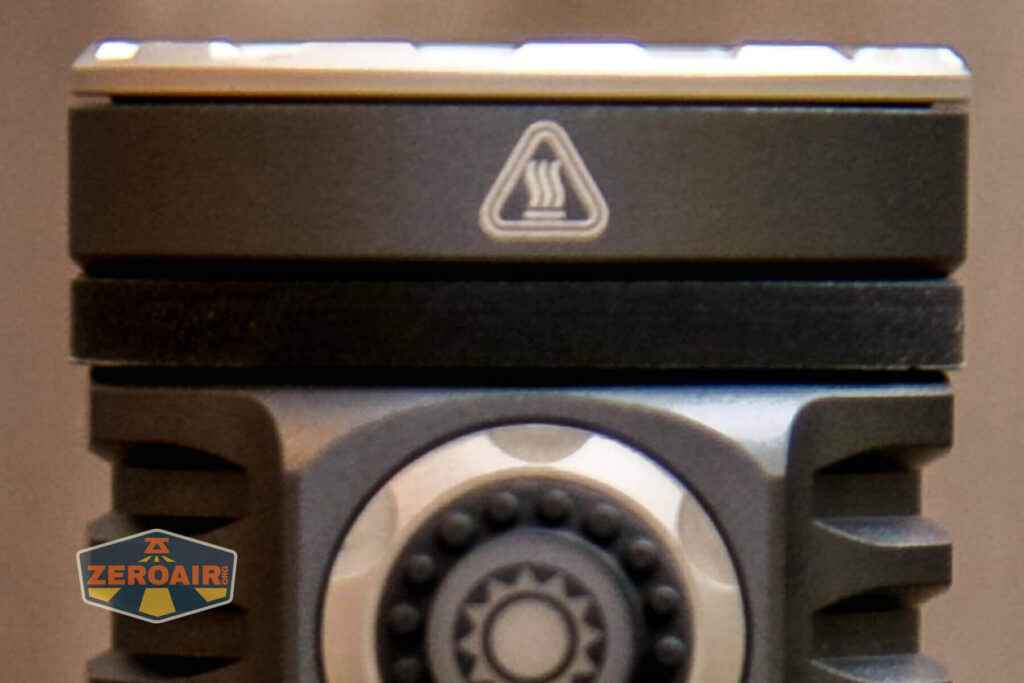

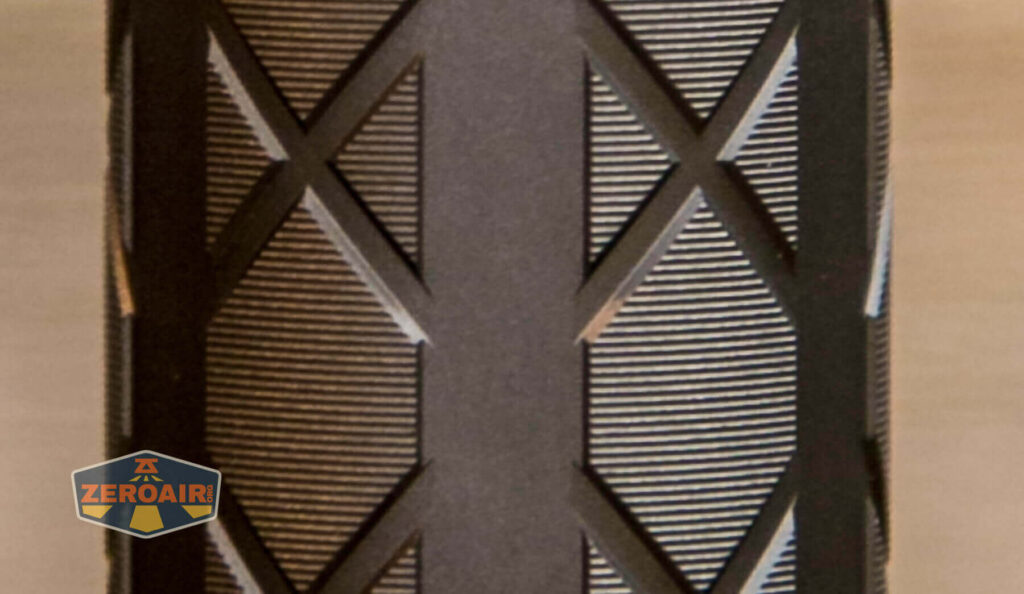












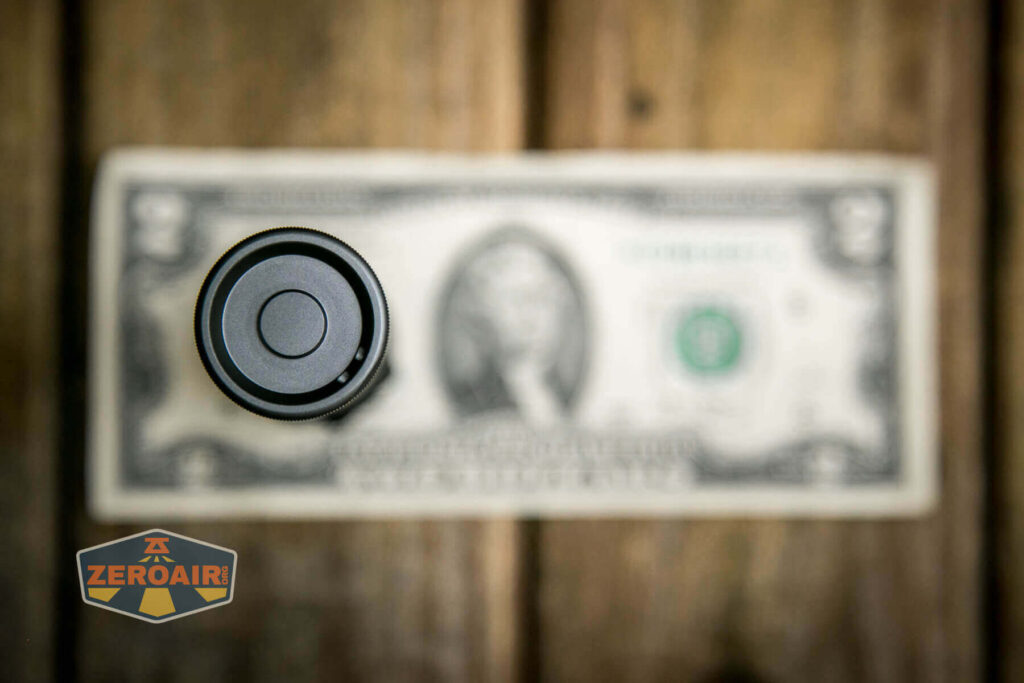





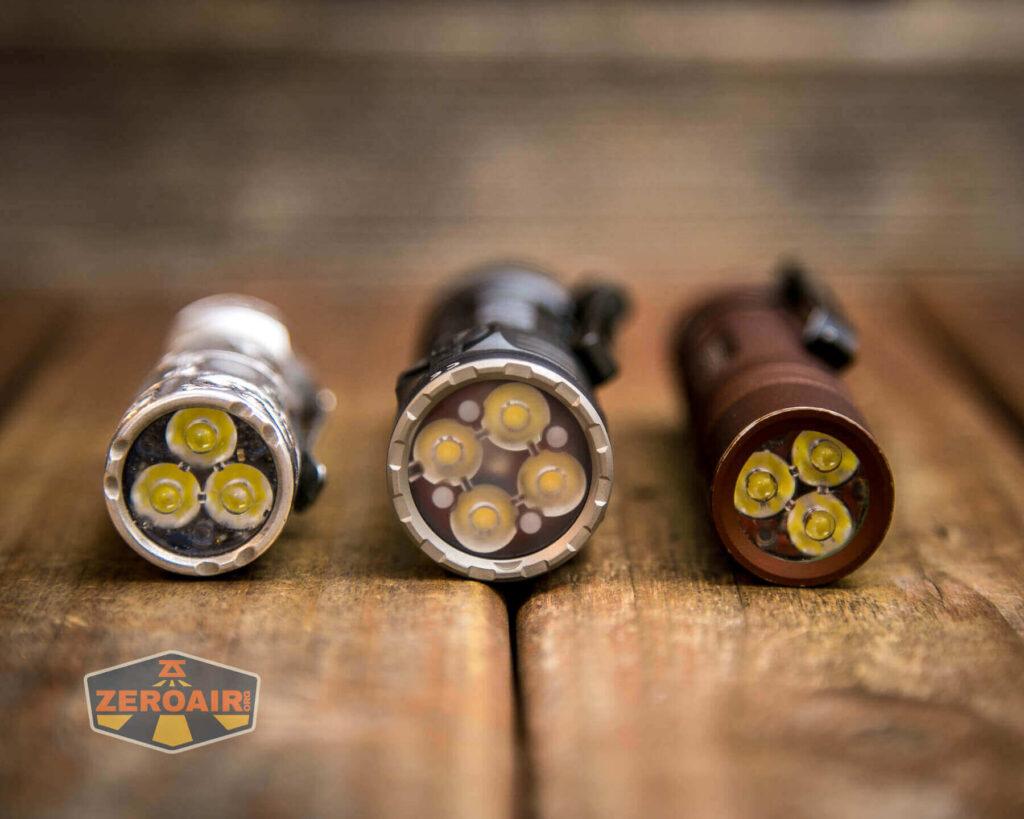



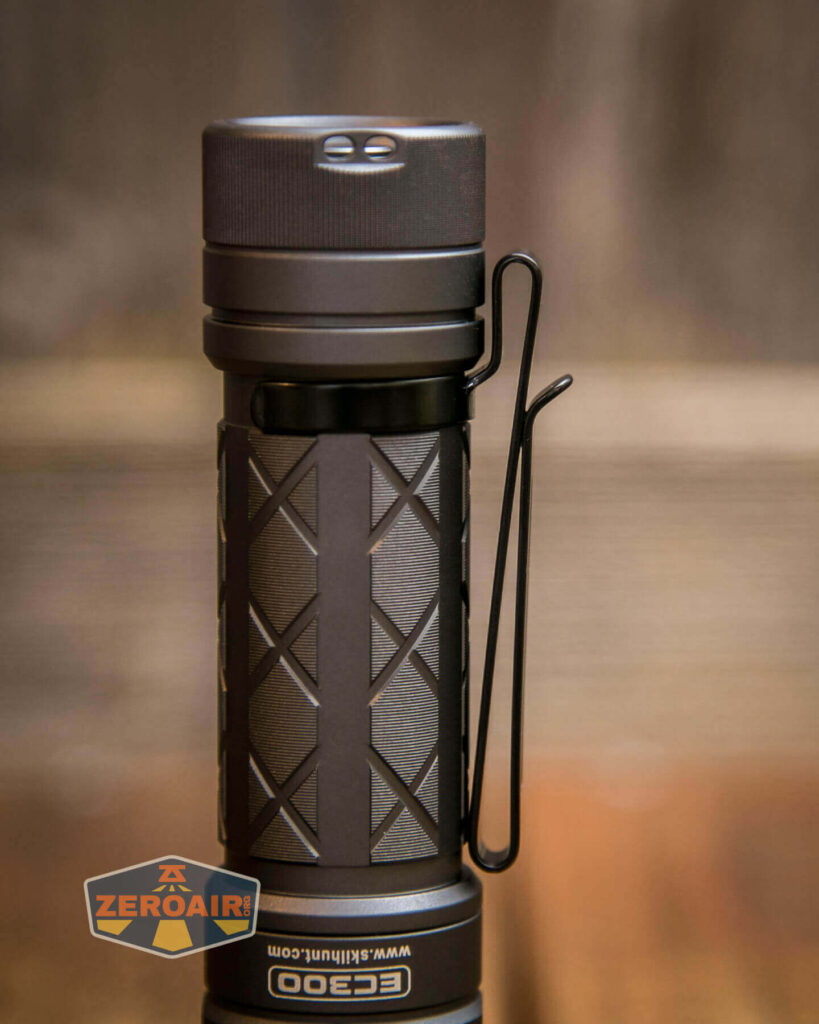


































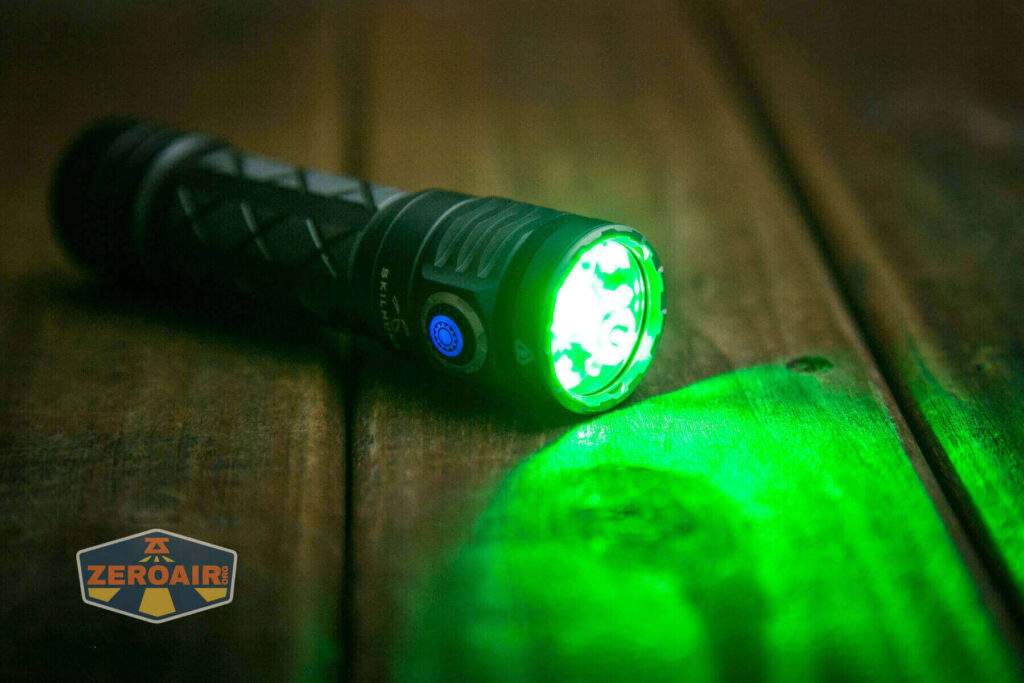


















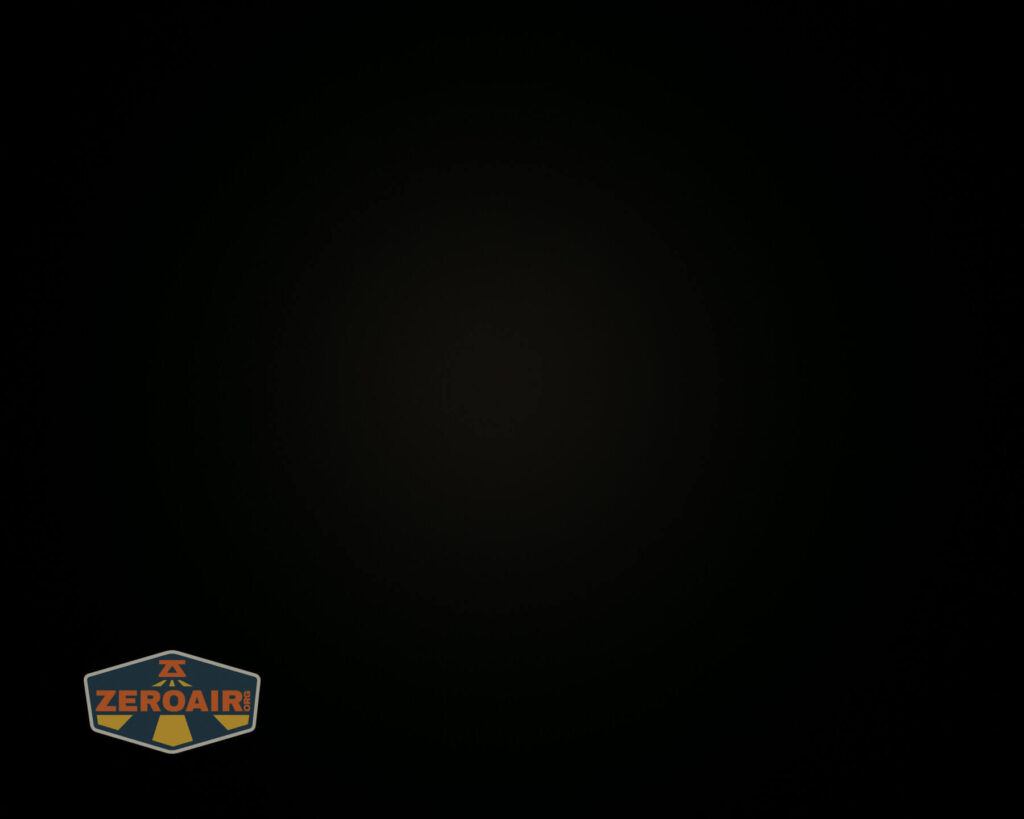




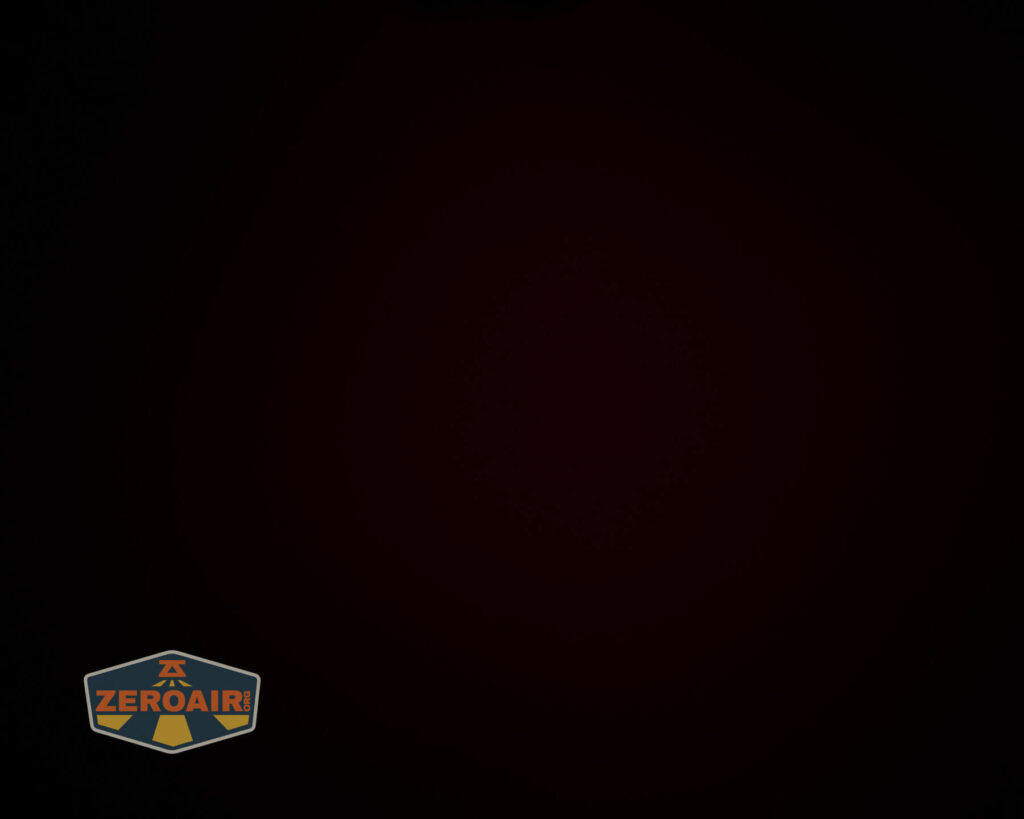












SO MANY OF US ARE TIRED OF LIGHTS THAT HAVE A USELESS TURBO/HIGH THAT RUN FOR 30 SEC TO 2 MINS AND THE DROP 50-90% OF OUTPUT.WE KNOW ITS FOR MARKETING /
HAVE ANY LIGHTS THAT ARE AMAZING REGULATION ( FLAT CURVE) THAT STAY AT A SET LUMENS TILL IT DIES? WITH NO SILLY TURBO?
IM US MILITARY ( SPACE FORCE) WE ARE SO TIRED OF FENIX !!! OUR NEW TAC LIGHT LAST 25 SECONDS ON TURBO AND THEN DROPS 2000+ LUEMS !
HAVE ANYTHING WITH NO DROP..OR AT LEAST A HIDDEN TURBO MODE?
“The brightest mode on a good flashlight is usually called “Turbo” mode. In Turbo mode, the flashlight will over-drive the LED to give you extra brightness for a minute or two when you really need it. This usually generates a lot of heat, but once the light has heated up all the way there’s nowhere else for the heat to go. At that point the light will step down to a lower brightness (usually to High mode) so that it doesn’t overheat or burn its user.
A lot of users don’t like this feature or find the advertised brightness misleading. “Why can’t I buy a flashlight that doesn’t step down?” The reason is that a light that doesn’t step down cannot have a Turbo mode. Would you rather have a light that can only do 500 lumens because that’s what it can sustain without overheating? Or, would you rather have a light that can sustain 500 lumens and do 2000 lumens for a minute or two at a time?
If you want a light that doesn’t drop in brightness after a minute or two, the best solution is to buy a light that has the brightness you want on High mode, and then use High mode because it won’t step down. Then, when you need some extra brightness you can step up to Turbo.
It’s also worth noting that it takes 4x the lumens to be 2x as bright, so most Turbo stepdowns are not as visually significant as you would think based on the lumen numbers.” – written by u/TacGriz
Thanks for the review.
Can this work using normal flat-top unprotected 21700 battery?
Yes, flat-top unprotected 21700 works fine with no rattle at all.